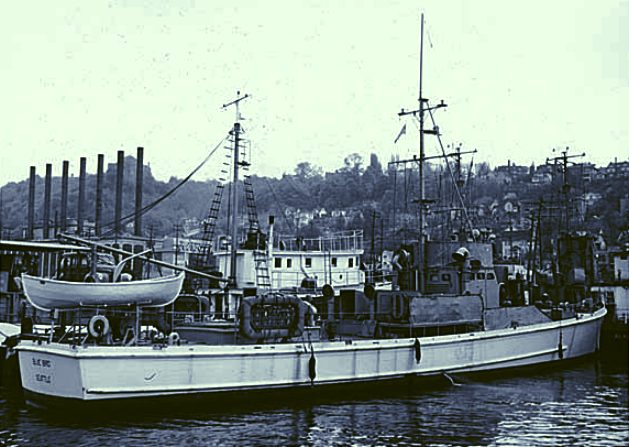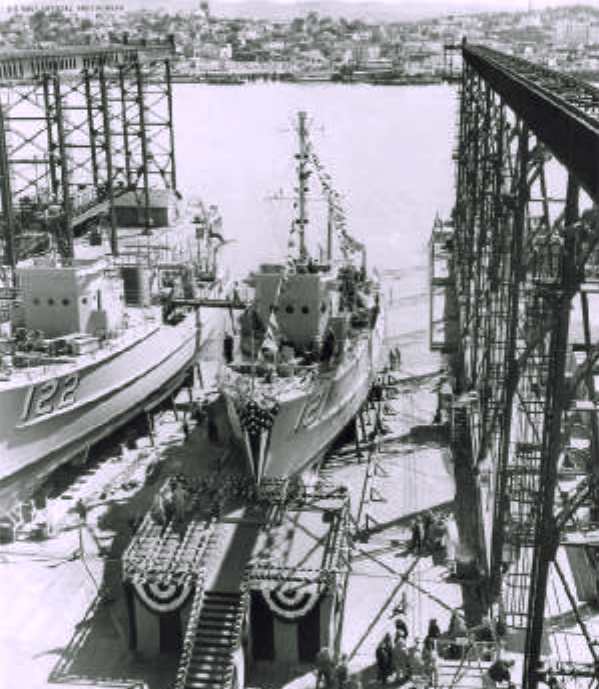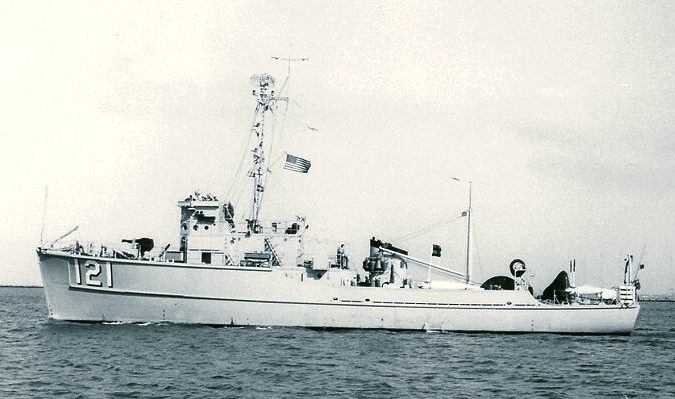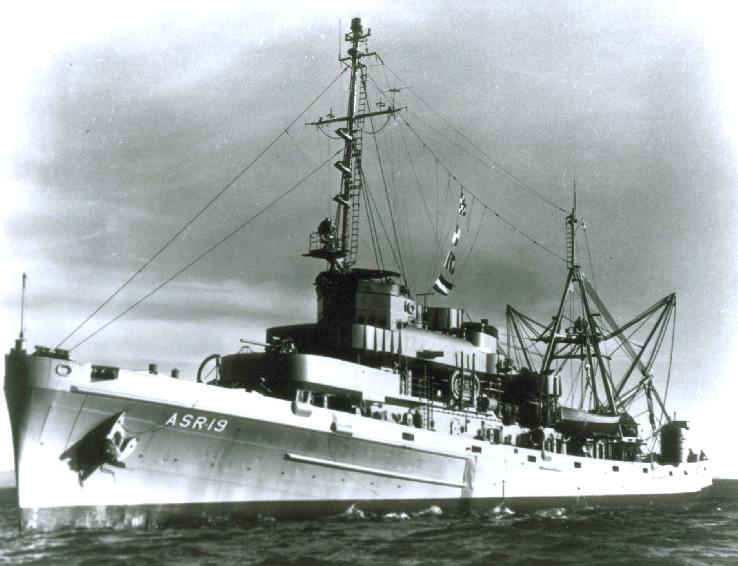|

USS
Bluebird AMS-121 - was a minesweeper for coastal clearances
USS Bluebird (AMS-121) was a Bluebird-class minesweeper acquired by the U.S. Navy for clearing minefields in coastal waterways.
The third Bluebird to be so named by the Navy, AMS-121 was laid down on 5 February 1952 at Vallejo, California, by the Mare Island Naval Shipyard; launched on 11 May 1953; sponsored by Mrs. G. C. Demmon; and commissioned on 24 July 1953, Lt. (jg.) Warren C. Graham in command.
West Coast operations
The minesweeper operated out of San Diego, California, performing the usual tasks such as type training and fleet exercises. She also engaged in some experimental work.
Transfer to the East Coast
On 5 May 1954, however, Bluebird stood out of San Diego bound for Charleston, South Carolina. She transited the Panama Canal on 19 May and, after a visit to Guantanamo Bay, Cuba, arrived in her new home port on the 27th. The minesweeper conducted normal training operations out of Charleston and in Chesapeake Bay for about a year.
Reclassified coastal minesweeper
On 7 February 1955, Bluebird was reclassified a coastal minesweeper and redesignated MSC-121. During the summer and fall of 1955, she participated in two Bureau of Ships projects. The first tested the effects of underwater explosions on minesweeper hulls and equipment. The second consisted of an overall evaluation of the Bluebird-class minesweeper. Later that fall, she joined in LantPhibEx 1-55 off Onslow Beach, North Carolina. Early in 1956, she was based at Yorktown, Virginia, but soon thereafter returned to her old home port, Charleston.


USS
Bluebird AMS-121 - launch and operation
Participation in NATO exercises
Charleston remained her home port for more than 12 years. In addition to the usual single-ship drills and type training, the minesweeper participated in such exercises as the annual
NATO "Sweep Clear" exercises and Atlantic Fleet amphibious exercises. She tested minesweeping gear for the Mine Defense Laboratory at Panama City, Florida, and served as a school ship for the Mine Warfare School.
Earning the Armed Forces Expeditionary Medal
In January 1961, Bluebird began making regular periodic deployments to the West Indies serving under the auspices of the Commander, Fleet Training Group, Guantanamo Bay. It was on one of those deployments that, during the summer of 1965, she earned the Armed Forces Expeditionary Medal for her role in the American intervention to restore order in the volatile Dominican Republic.
Home-based out of Florida
Those and similar operations continued to occupy her time until September 1968. On 5 September, she received orders changing her home port to Ft. Lauderdale, Florida. Bluebird departed Charleston that same day and reached her destination on the 7th. Two days later, she was placed out of commission, in service.
Reassigned as a training ship
The minesweeper was assigned duty training naval reservists at Ft. Lauderdale. That service lasted until mid-May 1971 when she returned to Charleston to begin preparations for inactivation.
Decommissioning
Bluebird was placed out of commission, in reserve, on 1 July 1971. That December, she was taken to Norfolk where she joined the Atlantic Reserve Fleet. On 2 January 1975, her name was struck from the Navy list. She was sold to Oskco Edwards in September 1979. The details of her ultimate disposition are unknown.

USS
Bluebird
ASR-19
- a Penguin class submarine rescue ship
|
| Name: |
USS Bluebird |
| Builder: |
Mare
Island Naval Shipyard |
| Laid down: |
5 February 1952 |
| Launched: |
11 May 1953 |
| Commissioned: |
24 July 1953 |
| Decommissioned: |
9 September 1968 |
| In service: |
9 September 1968 |
| Out of service: |
1 July 1971 |
| Reclassified: |
MSC-121, 7 February 1955 |
| Struck: |
2 January 1975 |
| Fate: |
Scrapped, 1979 |
| General
characteristics |
| Class & type: |
Bluebird-class minesweeper |
| Displacement: |
330 long tons (335 t) |
| Length: |
144 ft 3 in (43.97 m) |
| Beam: |
28 ft (8.5 m) |
| Draft: |
12 ft (3.7 m) |
| Propulsion: |
Packard
diesel
engines, 600 hp (447 kW)
2 shafts |
| Speed: |
14 knots
(26 km/h; 16 mph) |
| Complement: |
39 |
| Armament: |
• 2 × 20 mm gun mounts
• 2 × .50 caliber machine
guns
• 1 × 81 mm mortar |
|

LINKS:
http://en.wikipedia.org/wiki/USS_Bluebird_%28AMS-121%29
http://www.shipspotting.com/gallery/photo
id 791448
http://www.history.navy.mil/danfs/b7/bluebird-ii.htm
http://en.wikipedia.org/wiki/USS_Penguin_%28ASR-12%29
http://en.wikipedia.org/wiki/USS_Bluebird_%28ASR-19%29
http://www.history.navy.mil/
http://www.navsource.org/archives/09/32/3219.htm
http://www.hullnumber.com/ASR-19
http://www.startrekfreedom.com/wiki/index.php/Bluebird_class
|



